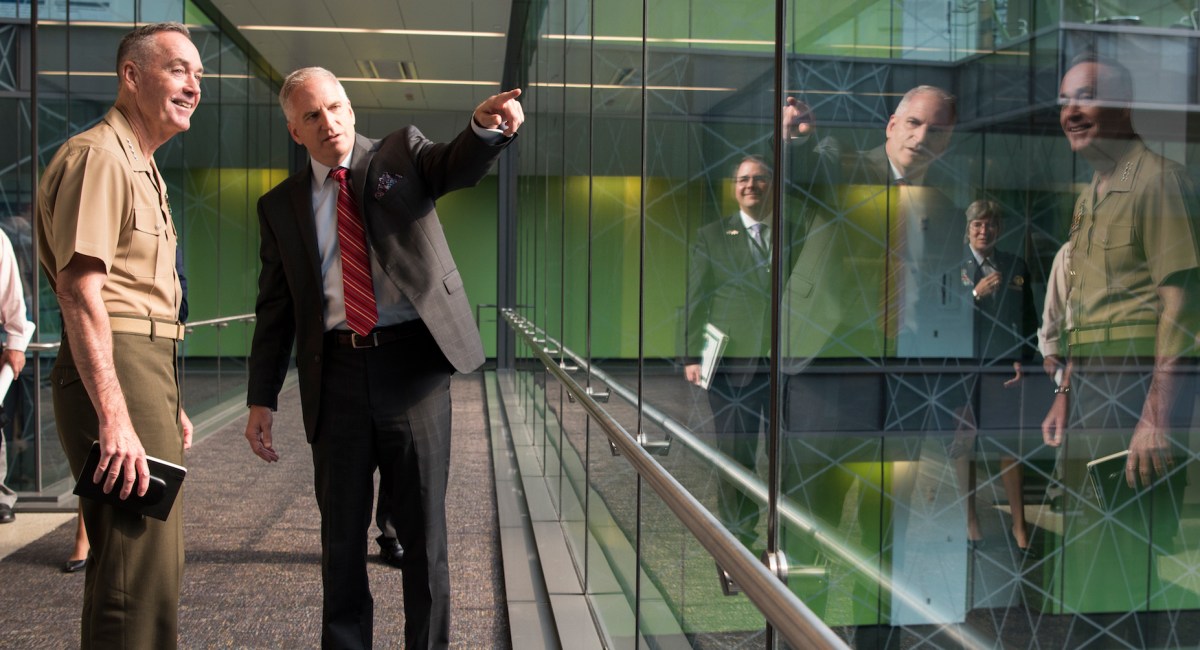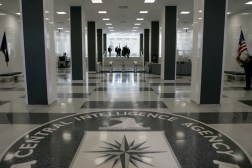NGA embraces the promise of AI, but not without the humans to match

Robert Cardillo has no illusions about whether artificial intelligence will be the future of the National Geospatial-Intelligence Agency.
The director of NGA said Thursday that the sheer volume of data flowing through his agency from both government and commercial satellites means he will have to embrace the developing technology to bear the brunt of the workload.
But to manage it still requires human judgment, which is why he’s also making a play to recruit a new swath of data scientists.
“That is exactly why we are engaging with and we are recruiting more on that data science side,” Cardillo said at the George T. Kalaris Intelligence Conference hosted at Georgetown University. “We did some math last GEOINT conference: 6 million imagery analysts [are needed] to keep up with that kind of [data] flow. As exciting as that number is to me as a director of NGA, it’s not very exciting at a U.S. taxpayer. So what we are doing is we’re trying to combine the best of both.”
Cardillo said that AI technology and algorithms are constantly improving, providing the agency an opportunity to let machines detect essential changes in the sites they are surveilling. But there still remains the crucial element of human accountability to determine how to act on it.
And while AI has shown promise, it still has a ways to go to recognize the substantive changes the agencies like NGA are looking for, said Valerie Browning, director of the Defense Sciences Office at the Defense Advanced Research Projects Agency.
“It’s important that we understand the limitations of where AI is today,” she said on a panel discussing the relationship between technology and human analysis. “There are numerous examples of where the current state of the technology can be very easily fooled and unfortunately, we don’t really quite understand the mechanisms. We have some hints.”
Browning cited an example from the University of California-Irvine where an AI algorithm used to differentiate between photos of wolves and huskies ended up making the distinction not between the animals, but whether the foreground of the photos featured snow or grass.
“That’s what we need to be able to understand,” she said. “What are the important features as we train these systems. Because then, we understand what the important features are in the training data sets and we can begin to ask the systems to tell us why [they assessed this change].”
So as the technology continues to mature, people continue to be the most valuable commodity in an increasingly competitive environment. Andrew Brooks, NGA’s chief data scientist, said the agency has offered some hiring bonuses in the past, but the best opportunity that government can provide is the one it always has: the mission.
“The one way I kind of look at it, in this space … there is the compensation part, which is the hard numbers and me hiring you,” he said. “Come join us for a while. Come join us for an adventure and be part of this. Apply these technologies and these things you are interested in with super high-stakes problems. There’s the number part, but how good are you? Come prove it.”






